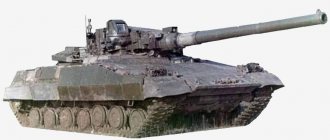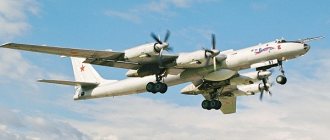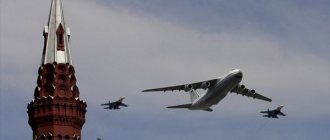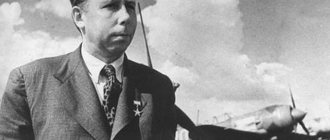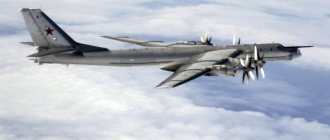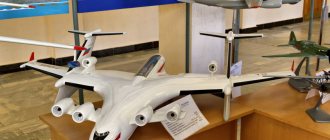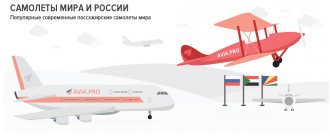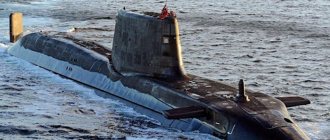Why stealth technologies don't always work effectively
The new Chinese carrier-based stealth fighter, based on the Shenyang J-31, took off for the first time. How “invisibility” is achieved and why, even if stealth technologies are used, aircraft appear on the radars of radar stations - in the material of Gazeta.Ru.
“Photos have emerged of what appears to be China's carrier-based stealth fighter taking off for the first time. The photographs confirm that the aircraft, the exact designation of which is unknown, is a development of the modernized Shenyang FC-31 stealth fighter. The photographs show a catapult launch rod on the nose landing gear and components on the wings that allow them to be folded. This is a typical feature of carrier-based aircraft,” reported the American portal Defense News.
“China is developing its aviation industry by leaps and bounds. He is experimenting in all areas that were once occupied by the USA and the USSR. In the future, China will pose a competitive threat to Russia and the United States, because the way it is developing its aviation speaks of its very great ambitions,” military expert Dmitry Litovkin told Gazeta.Ru.
Why do Russian radars see stealth planes?
Operation Desert Storm brought stealth technology to worldwide fame. For six weeks in a row, American F-117 attack aircraft bombed Baghdad. Every night, US Air Force aircraft freely crossed all lines of Iraqi air defense, hit their intended targets and returned to their bases unharmed. It looked impressive, to say the least, and allowed Deputy Commander of the US Air Force John Welch to proudly remark: “Stealth technology has returned us to that fundamental principle of war, which is called surprise.”
For some time, the F-117 became no less popular an American brand than Cadillac or Coca-Cola. Do not forget that any war is a powerful advertisement for the weapons used in it. If it lives up to expectations.
The price of stealth
Experts do not use the word “invisibility” when referring to stealth technologies. It is impossible to make an airplane or rocket invisible using modern means. You can reduce their visibility - and even then only in the field of view of the radar. This is the first Achilles heel of stealth aircraft: they are visible to the naked eye of the operator of a short-range man-portable air defense system. And visible to his missile with a television homing head. Modern MANPADS use a combined method of targeting a target: optical, infrared (using a thermal trace), laser, and stealth technologies cannot help here. Another thing is that it is advisable to shoot down enemy planes at distant approaches, and not at the moment when they fly overhead.
For long-range target detection, there are radars. If you do not take into account the missile defense system, then the average army radar sees an aircraft 300 kilometers away. Stealth technologies can reduce this distance - but at what cost...
To disperse the radar beam, the aircraft is made angular, consisting of flat edges. This design is called faceted. Wherever possible, metal is replaced with carbon fiber. Where it is not possible, they cover it with radio-absorbing materials. To hide engine compressors—one of the most visible metal parts on an airplane—from radar, special diffusers are installed in front of them to dampen the radar signal.
Flat nozzles create a wide spray pattern, which reduces visibility in the infrared range. For further camouflage, cold air from the air intakes is added to the jet stream. The traditional tail unit is replaced by a V-shaped “butterfly”, less noticeable to radar. Even the backs of pilots' seats in stealth planes are corrugated to diffuse radar radiation.
The result is an aircraft with poor combat characteristics. It cannot carry many weapons, since they are all hidden in the fuselage - the external suspensions reveal it! It is limited in speed and range. Finally, he is forced to use radar with great caution or even not have it at all. Because radar radiation reveals the most invisible aircraft as clearly as a flashlight beam reveals a burglar in a dark house.
There are two more drawbacks. Stealth aircraft are not cheap. The American B-2 Spirit bomber is the most expensive aircraft in history, costing over $1.5 billion per copy. And despite all the tricks, they are still shot down.
Get the invisible man
On March 27, 1999, during the war in Yugoslavia, a US Air Force F-117 Night Hawk stealth aircraft was shot down by a vintage R-125 Pechora anti-aircraft missile system. The first 5V27D missile, fired at the Kirov plant named after the 20th Party Congress in 1976, tore off the wing of an American fighter, the second hit the fuselage. Pilot Dale Zelko ejected, hid in the woods and was evacuated by helicopter several hours later by American special forces.
“On March 24, we left the military unit and moved to the suburbs of Belgrade, near the village of Shimanovci,” said the commander of the P-125 crew, Dragan Matic. -Three days passed relatively calmly: we worked according to teams, the usual procedure. The main task was not to fall under the radar of the AWACS escorting the NATO aircraft. On the evening of March 27, our entire brigade was on duty. A colleague from the tracking service reported strong interference on the air - the source of the interference was moving in our direction. Five minutes later, radio reconnaissance reported that a target was approaching our crew. I looked at the monitor and saw her, the signal was clear. I reported to the commander that the target had been fixed and we were ready for defeat. 17 seconds after the “Fire” command, the plane was shot down by our missiles.
Having fired back, the anti-aircraft gunners immediately left the position.
— The faster you redeploy, the greater the chance of the crew staying alive. During three months of aggression, we changed our position 24 times. AWACS and American satellites were watching us. 20 seconds on the air or on the enemy radar - and consider yourself dead. A Tomahawk or a powerful bomb will arrive,” Matic continued. “We shot silently and left - this saved our team.” No one was hurt, although nine people in my air defense brigade were killed.
The Serbian rocket scientist said his crew was also hit by an F-16 and a B-2 stealth bomber. But these planes reached their airfields, so there is no evidence. And the Americans called the downed F-117 “lost” for a long time, and then asked to return it. The Serbs, naturally, refused - now the stealth cockpit adorns the aviation museum in Belgrade.
Who didn't hide, we are not to blame
Every airplane consists of compromises, as aviators like to say. In the Air Force, this is a thing as immutable as lift. Speed and maneuverability, payload and combat range, means of target detection and protection against air defense - when creating each combat aircraft, these contradictory, but equally important properties for it are linked into a single complex, sacrificing something for the sake of something.
The F-117 sacrificed a lot for stealth. Built according to the “flying wing” design, it maneuvered poorly, could not fly at supersonic speed, was unstable in pitch and yaw, and its flight path had to be constantly adjusted - this function was assigned to the automatic control system. The Night Hawk did not have radar or electronic warfare systems. If detected, he was defenseless against attack from the ground or air.
Despite the automatics and the most experienced pilots, 6 of the 64 F-117s built crashed during training flights.
Due to these shortcomings and a lost advertising campaign, the Night Hawk was withdrawn from service in 2008. It was replaced by the F-22 and F-35 fighters. Having compared the latter’s stealthiness and the capabilities of the S-400 Triumph air defense system, the head of the analytical Carlo Kopp concluded that the American fighter would be easy prey for Russia’s latest air defense systems.
Stealth technologies are more or less effective against radars operating in the X-band (8-12 GHz), and ultrashort wave locators (30 MHz - 3 GHz) are perfectly visible to stealth aircraft. Just such mobile anti-stealth radars are entering service with the Russian army. Chinese Navy ships are also equipped with similar radars.
Why has Russia's newest stealth aircraft angered global competitors?
Today is the second day of the main aviation event of the year - MAKS-2021. The world press literally exploded after a record number of high-profile premieres. Why is our stealth plane so annoying to competitors? And what does the newest business jet look like inside? Only the Izvestia film crew was allowed to board.
Exclusive footage - in the report of correspondents Yaroslav Bogat and Anton Zolotnitsky.
Now a helicopter group from India is preparing to take off. During the demonstration flight, pilots must show their skills. A wide variety of equipment is constantly being deployed on the wing. Of course, what is most awaited here is the appearance of the legendary aerobatic teams. “Swifts” and “Russian Knights” will again delight the audience. The sky above Zhukovsky is shared with them only by supersonic vehicles.
But the main intrigue was the plane, which will take off only in 2023. The aviation world has finally been shown the very dark horse that should checkmate its main competitors. This is the main intrigue of the International Aviation and Space Salon.
The first reaction of foreign media to the presentation of the fifth generation light tactical fighter was not long in coming. And if the American CNN and ABC restrainedly reprinted the combat characteristics, then the British The Times does not hide its emotions in the headline.
"Russia unveils 'Checkmate' stealth plane to mock Britain."
In one of the announcement shots, the optics of the new aircraft actually showed a silhouette resembling a destroyer. Very similar to the Defender - a warship that violated Russian borders and changed course only after jet engines roared in the sky. It is possible that in the near future the Checkmate, a universal vehicle, will also be deployed to guard borders. Due to the shape of the air intake, reminiscent of an angry grin, it was nicknamed “Screamer” in foreign media.
The new fighter can definitely be called the younger brother of the Su-57. The exact same engine with deflectable thrust vector is installed here. For a combat vehicle of this weight, this means only one thing - super maneuverability. In addition, the takeoff and landing distance has been reduced. And here even the tail number consists of the same numbers: “7” and “5,” as they said, these are lucky numbers for them.
However, at MAX there is already something to look at, touch and even try yourself in the role of an ace. Safety is guaranteed - minimum height. You can feel like a pilot without taking to the skies thanks to these simulators. Here you can train everything, right down to mid-air refueling and aerobatics. The sensations are as realistic as possible. Perhaps this is the only place where the pilot has the right to make a mistake.
But it is not only military aviation that attracts MAKS visitors today. Correspondent Anton Zolotnitsky will talk about the most interesting things in civil aircraft construction.
One of the exclusive new products of MAX is the Sukhoi Business Jet. Luxury modification of the classic Superjet. This plane was personally inspected by Vladimir Putin. And only the Izvestia film crew was allowed to board.
In three spacious lounges you can comfortably dine - the table rises to the desired height - watch a movie or news, or hold a meeting. For the main passenger there is a personal seating area with a sofa that converts into a bed and lighting that changes depending on the time of day.
There really is something to see at MAKS-21: the newest Russian passenger airliner MS-21 300, the first converted Mi-8 helicopter of the national air ambulance service and much more. Today the salon opened its doors to all aviation enthusiasts.
Features of the SR-71
In March 1990, the SR-71 set a speed record. It flew from Los Angeles to Washington in 64 minutes – that’s more than 4 thousand kilometers. The average speed of the SR-71 was almost 3.5 thousand kilometers per hour.
Typically, Stealth technology is used only when it is necessary to destroy the most important enemy objects. Therefore, such machines are used quite rarely. In case of failure, the opponent will easily learn about technologies that help avoid radio waves.
However, in the case of Blackbird, everything is already known. After all, this bird had already flown away back in the 1990s. The SR-71 is built from materials that not only absorb waves or reflect them in the opposite direction from radars, but neutralize them. When a wave hits an airplane, it hits the airplane itself and hits its structure until it loses energy and disappears.
The SR-71 is built from materials that reflect waves / Photo US Air Force
Accordingly, the signal does not return to the radar. No matter how powerful Americans describe the Blackbird, it is not perfect. After all, only some of the waves break. There are also those who simply fly away in other directions; they were never absorbed by the material of the plane. In general, there are many methods for preventing radar waves, and the most advanced today is considered to be the B-2 Spirit, which is shaped like a plate. The waves simply flow around it and pass through it without being reflected.
In general, the story with Stealth is very interesting. It was the first time that the aircraft's stealth dictated its shape. After all, it was usually the other way around. Everything was adjusted to the aerodynamic capabilities of the aircraft, noted researcher John Volakis.
The grandiose F-117 Nighthawk project
Having tested all their inventions and technologies in the United States, they decided to develop a stealth fighter. They even went so far as to speed up the speed of the rocket's release as much as possible. After all, an open opening for weapons can create an obstacle to the radar wave, which will help determine where exactly the plane is in the air.
Information about the creation of the aircraft was kept as secret as possible. The scientists working on this program were divided into departments, where each had exclusively their own work. Apart from the military (and even the highest ranks) and special services, no one knew that the country was preparing a grandiose F-117 Nighthawk project.
Information about the creation of the F-117 has been classified / Photo US Department of Defense
Several years and more than $100 million later, the plane made its first flight. It was perfect for the 1980s. A single-seat subsonic tactical stealth strike aircraft that is capable of penetrating any enemy air defense systems that existed at the time.
Stealth completely changed the way we fight. Now you have the opportunity to sneak into any country unnoticed and do almost anything there. You can destroy any target and at the same time no one will know that you were even there,” said historian Greg Hennemann.
